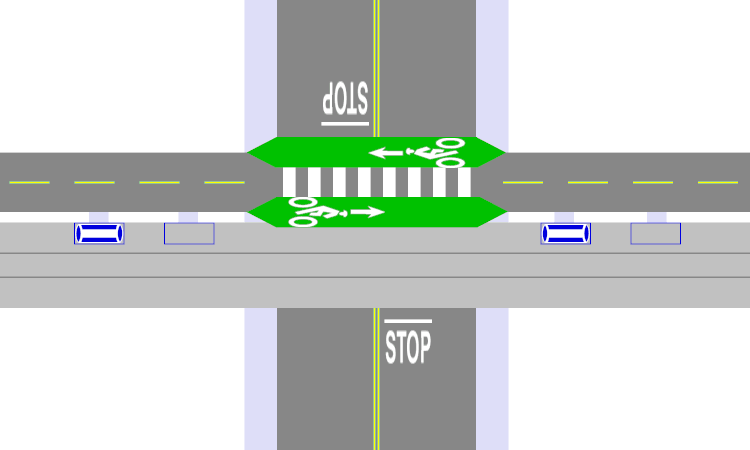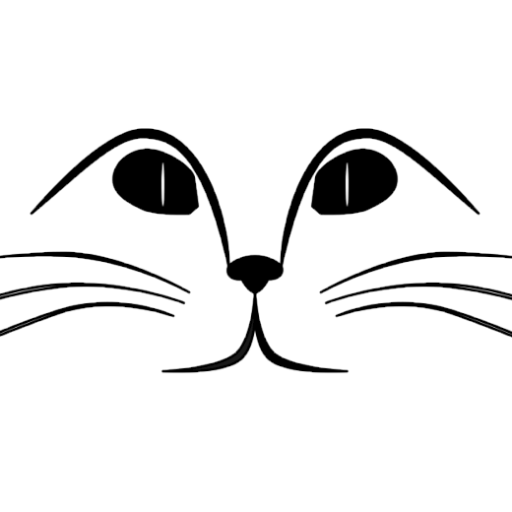RailCAT choreography refers to making sure the individual CAT vehicles are coordinated as a system to ensure that everything runs smoothly, preventing traffic jams within the system and also minimizing the impact on ordinary traffic that might be trying to cross the railroad tracks.

The above image shows an example of how the vehicles might operate during a period of low demand. But during a high-demand period, it will be highly desirable to group the vehicles together to minimize the inconvenience for people crossing the tracks.
This page is under construction: We are still investigating what traffic patterns are feasible and consistent with ASCE APM Standards. We believe something like the following description will work.
One approach would be to manage the system so that every minute (for example), there would be a two groups of CATs, that is one group in each direction, simultaneously crossing the street. The vehicles in each group would be spaced as closely as possible, subject to regulations and other constraints.
If, for example, the system allowed eight CATS per direction to cross at the beginning of each minute, spaced 2.5 seconds apart, that would leave 40 seconds for street users to cross the tracks and the maximum wait (for drivers) would be about 20 seconds.
Based on the assumptions above, with an average of 1.5 passengers per CAT, we calculate a system capacity of 720 passengers per hour per direction. This compares favorably with the TCAA business plan estimate of 3575 boardings per direction per day (that is, 7150 total). If the trains run twice per hour, they would each need to carry 360 passengers to match this estimate of RailCAT capacity.
(Under construction: We are still researching the actual system capacity, and this page will be updated soon with more detailed and precise information. This will also include further explanation of how we ensure that CATs can join the flow of traffic, and how the street crossing timing can work across multiple intersections, which is probably too much information for most people!)
